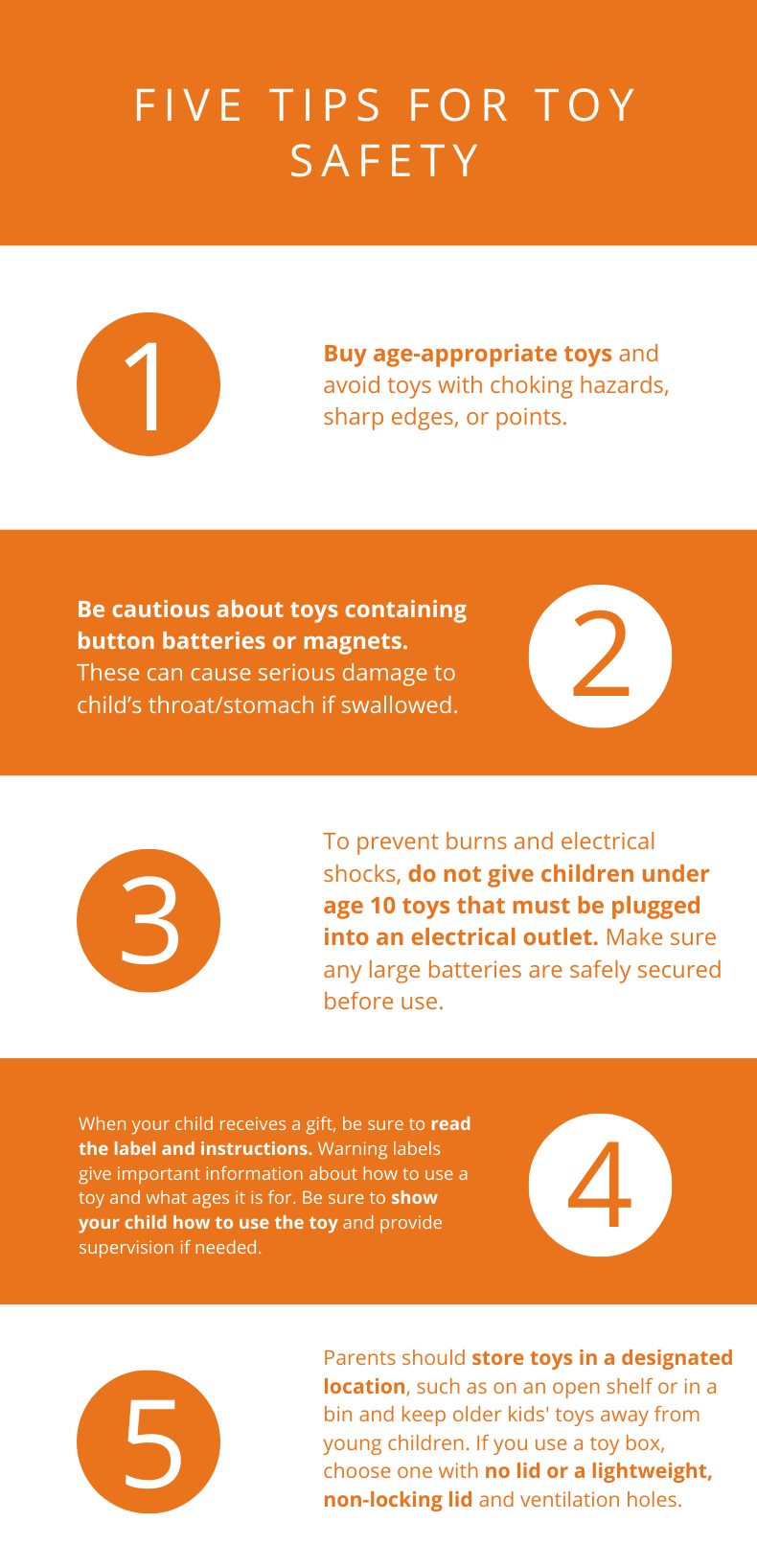5 toy safety tips for the holiday season
Our blog has a new look! Based on your feedback, we've improved our website and our blog Look around the new site and continue to let us know your thoughts.
It’s the holiday season, and although toy safety may seem more relevant at this gift-giving time of year, toy safety is something parents and caregivers should consider all year long. Toy-related injuries account for a significant number of childhood injuries in the U.S. According to the U.S. Consumer Product Safety Commission (CPSC), there were 251,700 toy related injuries in 2017 alone. Fortunately, approximately 95% of children treated in the emergency room for toy-related injuries were treated and released after, but children can still be seriously hurt by toy-related injuries. Prevention of these injuries requires some vigilance on the part of parents and caregivers when choosing a toy for their child.
How to know if a toy is safe
When choosing a toy, there are some things to keep in mind. Is the toy age-appropriate for the child? Is the toy’s structure safe? How is the toy powered? These are all factors that should be considered. Obviously, a child’s age is very important when choosing a toy. A toy for a 14-year-old would not be appropriate for a baby or toddler. When choosing a toy for a toddler or baby, it’s important to ensure there are no small or loose pieces that could be swallowed and that there are no sharp edges or points. Also, consider toys that will build developmental skills, such as shape sorters and stacking blocks. These help with developing fine motor skills and cognitive skills.
For older children, many people may be thinking of purchasing smart devices. If you’re planning to do so, think about the purpose or use of this device, parental controls, and rules that may be pre-determined around the use and expected behavior on these devices. Many toy-related injuries for kids older than ten are caused by riding toys like bikes, scooters, and skateboards. Ensure the proper safety equipment is provided with these toys; helmet, knee pads, or elbow pads may be needed with many riding toys.
5 tips for toy safety

For further information related to toy safety go to HealthyChildren.org.
